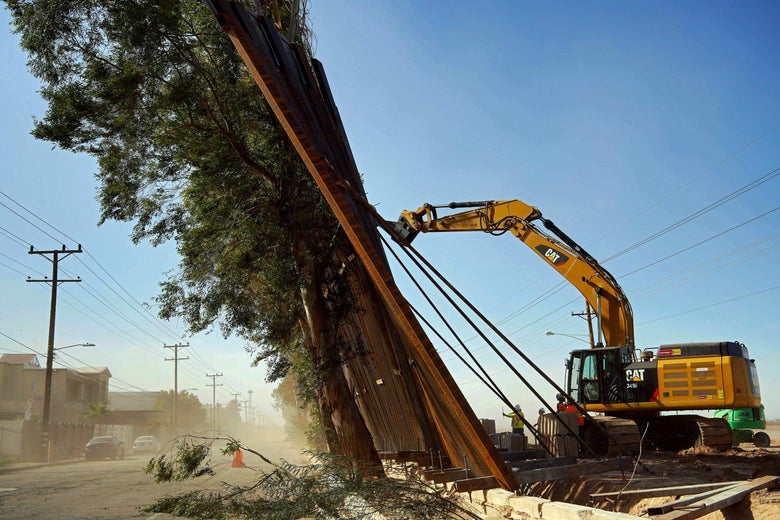
A construction crew works on a fallen section of the border wall on Jan. 29, 2020.
STR/Getty Images
Welcome to the absolute dumbness of it all. This is what happens when reality gets retrofitted to accommodate a bad idea. You end up with this, the Trump border wall, that apparently will need, essentially, to be left open for months at a time to accommodate flash flooding during the summer “monsoon season.” This episode of reality bites, the Washington Post reports, is brought to us by in the know border officials, agents, and engineers. Here’s the most maddening part from the Post: along the more remote portions of the southern border, large unmanned gates that need to be manually raised ahead of the seasonal flooding, and then left open for months to accommodate the large amounts of debris carried with it, are already being waltzed through by smugglers and undocumented migrants. Put more simply: the wall is already not working, so let’s build more!
The flooding risks are not new, but they represent one of the most significant engineering hurdles to President Trump’s campaign promise of a “big, beautiful wall” on the Mexican border. The Trump administration has been largely silent on how it intends to cope with the diverse environmental realities of the border region that spans desert, canyons, and mountains. “The border is so diverse,” Roy Villareal, chief of the Border Patrol’s Tucson sector, told the Post. “You have to plan for water flow. . . . People think it’s just this monolithic wall, sort of like the Great Wall of China, where you drop it into place and that’s all there is to it. And that’s not the reality at all.” On the upside, Villareal said the wall, even with gaps, narrowed the area that required human-monitoring.
Trump’s descriptions of the wall have evolved—to the point of absurdity, like alligator-filled moats—but they always sounded pretty Great Wall-like. “Trump’s wall, which features 30-foot metal bollards spaced four inches apart, effectively acts as a sewer grate that traps the debris; when clogged, the barriers cannot withstand the power of the runoff,” according to the Post. “Veteran Border Patrol officials acknowledge that the government would be foolish to place vertical metal bars in the direct path of rivers and creeks that swell to dangerous volumes during summer storms. The U.S. southern border is crisscrossed by hundreds of drainage channels and several rivers… [where] smugglers and other border-crossers can enter through the large gaps and advance northward following stream channels and narrow canyons to avoid detection.”
from Slate Magazine https://ift.tt/2GSsmZ7
via IFTTT
沒有留言:
張貼留言